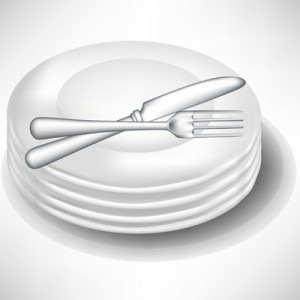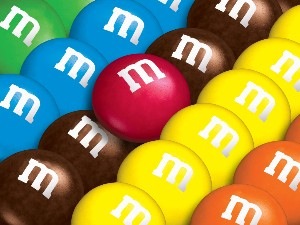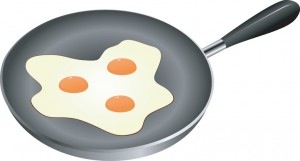 Have you eaten in some restaurants where the plates are so big that the server can’t find room to comfortably fit everything on the table?
Have you eaten in some restaurants where the plates are so big that the server can’t find room to comfortably fit everything on the table?
Maybe your plates are so big that you have trouble getting them into the dishwasher.
Does it make a difference other than for convenience? You bet it does.
The Size Of Your Dinner Plate Can Affect Your Weight
We eat off of big plates. Since 1960 the overall surface area of an average dinner plate has increased 36 percent. The average dinner plate we commonly use today measures 11 or 12 inches across. A few decades ago plates measured 7 to 9 inches.
In Europe, the average plate measures 9 inches while some American restaurants use plates that are around 13 inches in diameter.
Portion Sizes Have Increased Along With Plate Size
1960 sized portions would look a little lost on today’s large plates. Plop a small portion of spaghetti and meat sauce in the middle of a large plate and the temptation is to add more – usually pasta – to fill up the plate. That’s how you feed both your eyes and your stomach.
The additional problem – aside from eating more food at the meal — is that with more food piled on your plate, the idea gets embedded in your brain that a larger portion is better and that it takes a larger amount to fill your plate. Your brain then figures that If you need that much food to fill your plate then it takes that large amount of food to make you feel good.
Some Easy Things To Do
When you switch to a smaller plate you eat a smaller serving.
Control your portion sizes by decreasing the size of your plate. Try switching from a dinner plate to a salad plate or look for vintage plates that are smaller in diameter. Research has shown that by switching to a 10 inch plate from a 12 inch plate you eat 22 percent less.
Incredibly, smaller dishes can also help you feel full even though you’re eating less. Studies show that people are more satisfied with less food when they are served on 8 inch salad plates instead of on 12 inch dinner plates. But don’t go too small because eating too small a portion might send you back for seconds.
Keep This In Mind
We eat an average of 92% of what we serve ourselves. Since we pile more food onto larger plates, the larger plates means we eat more food. A two inch difference in plate diameter — decreasing the size of our plates to ten inches from 12 inches — would mean a serving that has 22 percent fewer calories. It’s a smaller serving but not small enough to leave you still hungry and heading back for seconds. For an average size adult who eats a typical dinner of 800 calories, the smaller portions that would result from using a smaller plate would lead to a weight loss of around 18 pounds a year.



